Degenerative adult scoliosis, also known as adult-onset scoliosis, is when the facet joints and intervertebral discs deteriorate and lead to a curve in the spine. This side-to-side curve occurs over time as a person gets older. It commonly begins after age 40, and is more frequently seen in patients who suffer from osteoporosis. Osteoporosis causes the bones to lose bone density, quickening the deterioration rate. The spine can begin to “lose shape,” and a scoliotic curve can develop.

What is Degenerative Scoliosis?
Causes of Degenerative Scoliosis
Age is the leading cause of degenerative scoliosis. Over time, facet joints and discs can deteriorate over time, causing the spine to weaken and lose shape. The joints and discs are what make your back flexible. The joints enable bending and twisting. The discs act as shock absorbers.
Degenerative changes are all part of getting older; however, there are other conditions that cause degeneration at high rates:
- Arthritis: Weak joints and irregular vertebral alignment caused by pressure on the spine.
- Osteoporosis: Loss of bone density weakens the bones and their stability.
- Spine Surgery: Recovery and time after a spinal surgery can cause spine deformities.
Aging joints, combined with any of the factors above, can cause significant deformity. Mild-to-moderate deformity is common in older people but can appear in people as young as their 40s. Studies show that approximately 60% of people over the age of 60 have mild degenerative scoliosis.
Treatments
Degenerative adult scoliosis can cause pressure on the nerves and along the spinal cord. This leads to weakness, numbness, and pain in your lower extremities. In extreme cases, the pain and weakness can make walking difficult.
Unlike scoliosis in adolescents, treatments for spine deformity in adults is determined by the severity of the symptoms, not the severity of the curve of the spine. Treatments tend to focus on managing the pain and reducing symptoms as opposed to correcting the curve.
For mild-to-moderate cases, treatment usually consists of pain management and physical therapy (PT). PT is used to increase mobility of the spine. Low-impact exercises may be used to help restore strength of the spine, with hopes of decreasing the symptoms and rate of deterioration. Over-the-counter medications can be used to manage and reduce pain. NSAIDs help minimize pain caused by inflamed joints or arthritis. Medications are not used to heal the spine, but to reduce pain caused by the curvature of the spine. Reducing pain can allow a patient to resume normal daily activities while they work to regain strength and flexibility.
Other ways to treat degenerative adult scoliosis include:
- Weight Loss: Losing weight helps decrease the pressure placed on facet joints
- Nutrition: Eating foods that help reduce anti-inflammatory properties – such as tumeric and ginger – help reduce the pain. Drinking water is important
- Bracing: A brace is used to restrict motion to relieve pain during daily activities and perhaps during physical therapy. Braces can also be used to decrease stress on the facet joints.
If the symptoms and curvature of the spine is severe, your doctor may recommend surgical options. Surgery is used when the patient’s pain is so severe that is become debilitating or when there is nerve damage from the spine curving. Nerve damage can result in the loss of normal bodily functions such as walking or bladder control.
To learn more about degenerative adult scoliosis, contact the team of experts at Progressive Pain Management. Fill out the form below to get in touch today.
When you live with pain, the change in seasons isn’t always a welcomed change. Warmer weather and humid days may have your running for air conditioning. The expectations of summer typically include spending time outside, having cookouts, and even going on vacation – all things that can increase the symptoms of chronic pain.
Pain can take away from the joys of summer. It can mean getting out of bed in the morning is difficult, and instead of playing with the family, maybe you are just sitting inside and not being active.

Walking to Reduce Pain
However, although the heat can sometimes worsen your pain, various activities help relieve pain and strengthen your joints. By incorporating these activities into your daily life, you can get outside and enjoy the summer months.
Activities to Combat Reduce Pain
-
Yoga
Yoga has known health benefits, and has become the standard to promote relaxation and overall wellness. There are specific yoga poses that help reduce back pain, joint pain, and can help increase your range of motion.
Doing yoga in hot weather can help improve flexibility and even increases its effectiveness. Being in the heat has the same effect as hot yoga, which detoxifies the body, boosts your mood, and promotes mindfulness. Head to a park or the beach to practice some yoga this summer and find relief from your pain.
-
Indoor Swimming
Swimming is a fun way to relax and reduce pain. Swimming, water aerobics, and low-impact cardio exercises in the water are effective and safe ways to practice strength training, build muscle, and help reduce pain associated with sports injuries, arthritis, and sciatica. The water creates a natural resistance while relieving the pressure on your joints. Being in the water also naturally lowers your blood pressure.
-
Biking
Going for a bike ride on a smooth terrain is a great low-impact cardio exercise that strengthens muscles and can help relieve pain. The way you sit on a bike is helpful to those with spinal stenosis. Getting your blood flowing with some light exercise helps release endorphins, which act as your body’s natural pain killer, and can help improve your mood.
-
Lounging in a Hammock
What better way to enjoy the fall temperatures than with some rest in the shade. Laying in a hammock is a great way to enjoy the warmer weather while simultaneously getting rest and taking some pressure off your sore joints. Hammocks allow your body to rest in a very natural position, with your head slightly elevated. Hammocks also prevent you from rolling in your sleep, which can result in uncomfortable or potentially painful positions.
5. Hiking
Going for a walk or low-impact hike is a light aerobic exercise that improves your stability, burns calories, and corrects posture for multiple muscle groups. Make sure you are keeping your spine straight and allowing your core muscles to do the majority of the work.
Getting your blood flowing and incorporating some low-impact cardio exercises into your summer schedule is important to your overall health. Being outside and getting fresh air and sunlight can do wonders for your mood and help other aspects of your health – not just help reduce pain.
Fill out the form below to get in touch with the team at Progressive Pain.
Many people battle constant pain; for many, pain relief medications are no longer enough. Depending on the cause of the pain and your medical history, your doctor may suggest a nerve block to provide long-term relief and improve your quality of life.
Doctors use nerve block injections as a palliative and therapeutic management of chronic pain, but they can also be helpful for diagnosis and prognosis. It can be beneficial as a treatment to avoid surgery.
What is a Nerve Block?
Every part of your body has a system of nerves that send pain signals. To stop these pain signals, your doctor may decide to block the signaling nerve.
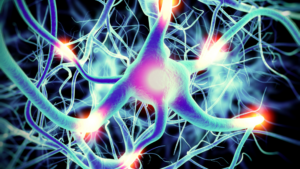
Permanent and Temporary Nerve Blocks for Chronic Pain
A nerve block is a procedure that disrupts nerve activity where a physician blocks pain signals by injecting medications into the set of nerves, causing discomfort.
The procedure can help people with chronic pain conditions improve their quality of life, allowing them to exercise, work and perform their day-to-day tasks
A nerve block effectively prevents, reduces, and manages pain, producing short or long-term pain relief.
Nerve blocks can help manage;
- Chronic pain conditions like sciatica, arthritis, and herniated disc pain
- Severe or acute pain
- The pain due to surgery
Types of Nerve Block Treatment and Their Differences
Nerve block treatment can be temporary or permanent;
Temporary nerve block
The procedure involves your doctor injecting medicines like steroids, anesthetics, or opioids into the affected nerve to block pain and inflammation.
A temporary nerve block can help manage pain during a surgical procedure, and it is also helpful during childbirth to block labor and delivery pain. The most common example of nerve block is epidural given during childbirth.
Permanent nerve block
Permanent procedures can either be surgical or non-surgical. The doctor will inject alcohol, phenol, or thermal agents directly into the nerve to damage the nerve pathways if they opt for a non-surgical permanent nerve block.
A surgical nerve block involves a neurosurgeon removing or selectively damaging certain parts of a nerve.
Surgical nerve block procedures include;
- Neurectomy which is the surgically damaging of a nerve
- Rhizotomy; involves surgically destroying nerve fibers responsible for sending pain signals to the brain.
- Sympathetic blockade
The differences between the two treatment procedures are;
- A permanent nerve block involves damaging or removing the nerve sending pain signals to a specific area, while a temporary nerve block blocks the nerve for a particular period.
- A permanent nerve block is irreversible, while a temporary nerve block is reversible.
What to Expect During a Non-surgical Nerve Block Procedure
The procedure requires needles, fluorescent light, and ultrasound to guide the needle properly. Your doctor may also use low-level electrical stimulation to locate your pain.
The doctor will first numb the skin before the procedure and inject the medicine into the nerve or a group of nerves. The injection numbs the area and reduces pain and inflammation.
Get Help From Progressive Pain Management
Visit our website to learn more about pain management. Better still, contact us by filling out the form below to schedule a consultation with our pain management doctors if you suffer from chronic pain.
Muscle pain is common and can originate in any muscle of the body. The medical term for muscle pain is myalgia. Myalgia can be described as muscle pains, aches, and pain associated with ligaments, tendons, and the soft tissues that connect bones, organs, and muscles.
Causes of Myalgia
Myalgia can typically be localized to one area of the body, or groups of muscles. The most common causes of muscle pain are stress, overuse, injuries, and tension. Muscle pain – specifically systemic muscle pain – can be caused by an illness, infection, or a side effect of certain medications.
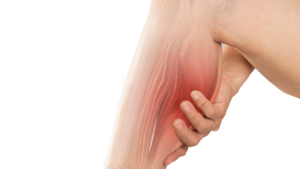
Myalgia Pain Causes, Symptoms, and Treatments
Common causes of myalgia includes:
- Chronic fatigue syndrome
- Fibromyalgia
- Lyme disease
- Lupus
- Myofascial pain syndrome
- Rheumatoid arthritis
Many other diseases and conditions cause pain to muscles such as hyperthyroidism, influenza, and dystonia.
Signs & Symptoms
Depending on the cause of your pain, muscle pain can be mild or severe, and in some cases, debilitating. Pain is the hallmark symptom of many chronic conditions. Symptoms can vary.
Muscle pain may be localized or widespread. Pain can be dull or sharp, mild or severe. With myalgia, the pain can be different, and may last a few minutes or constant. Unfortunately, the varying factors of your pain depend on many things.
Myalgia can cause fevers or chills if it is caused by an infection. It can also cause symptoms such as joint pain, or very weak (fatigue). Because of the pain, depression and feeling overly tired are common symptoms. This is true for most chronic pain conditions. Other symptoms can include tenderness, swelling, or redness.
It can be hard to do most of your daily activities if you suffer from myalgia and suffer from these symptoms.
Treating Myalgia
Muscle pain from overuse or injury can be reduced by resting the body and taking over-the-counter pain relievers or NSAIDs. Rotating between ice and heat within the 24-72 hours can reduce pain and inflammation and be soothing to the muscles, releasing any tensions or knots.
Myalgia caused by overuse or a condition like fibromyalgia can be treated by massage or gentle stretching exercises. A doctor should address pain that persists longer than three days.
If pain is a result of an activity or acts like “pulled” or strained muscle, the best course of method for at-home treatments is the R.I.C.E. therapy:
- Rest. Take a break from regular, daily activities
- Ice. Use ice on the affected area for 20 minute intervals throughout the day
- Compression. A compression bandage can be used to reduce swelling
- Elevate. Elevating your affected area can be used to help reduce swelling
If you experience pain that continues with rest, or if any signs of infections arise around a sore muscle, talk to a doctor about how to manage your pain. Seek immediate attention if you have trouble breathing, suffer from extreme weakness, or have a high fever.
Neuropathic pain is a severe burning or shooting pain. This is a condition that is more often chronic. Neuropathic pain is typically caused by severe, progressive nerve disease. This causes damage to various levels of the nervous system; the brain, spinal cord, and peripheral nerves. Also, it can be as a result of infection or damage. It mainly affects the lower back, limbs, and neck. Neuropathic pain can be constant, with the recurrent feeling of burning and shooting accompanied by loss of sensation or numbness.
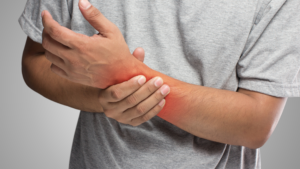
Causes of Neuropathic Pain
Unfortunately, neuropathic pain is widespread in the US. Researches show that based on best estimates, the prevalence of neuropathic pain among Americans may be between 6.9-10 percent. With chronic pain affecting over 20% of people in the US, neuropathic pain is the leading cause of pain. Populations most likely to experience this kind of pain include manual workers, women, people unable to work, people who are 50 years and above, and rural residents.
Causes Of Neuropathic Pain
The main causes of this form of pain can be categorized into four; disease, infection, injury, and loss of limb.
Disease
A lot of diseases can cause neuropathic pain, but at least 30% of these pain cases result from diabetes. Diabetic peripheral neuropathy affects at least 50% of people who have diabetes.
Other diseases that cause neuropathic pain include:
- Thyroid problems
- Multiple sclerosis
- Fibromyalgia
- Facial nerve issues like trigeminal neuralgia
- Connective tissue disorders
- Liver disease
- Kidney disease
- Alcoholism
- Multiple myeloma
Injury
Even when muscle, tissue, or joint injury has healed or leg, back, or hip problems improve, sometimes damage to the nervous system might not go away. Trauma caused by spinal injuries like spinal cord compression and herniated disc can damage your nerves near the spine. Also, iatrogenic injuries when doctors cut nerves during a surgical operation can cause chronic neuropathic pain.
Infection
Lyme disease, shingles, HIV infection and AIDS, Syphilis, hepatitis B and C, Epstein-Barr virus, leprosy, and diphtheria can also cause neuropathic pain.
Limb Loss
When your hand or arm is amputated, you can suffer neuropathic pain. This is because the nerves near the amputated part may send incorrect signals to the brain, making it feel like the removed limb is in pain.
Neuropathic Pain Treatments
Neuropathic pain treatment aims to know the underlying condition or disease causing the pain and treat it if possible.
The main aim of your pain specialist is to offer pain relief, assist you in maintaining your usual capabilities regardless of the pain, and enhance your life quality. Some of the common treatments include:
Over-The-Counter Medication
NSAIDs like Motrin and Aleve can sometimes be used to treat this kind of pain. Unfortunately, many people don’t find these medicines effective for neuropathic pain, since they do not target the primary source of the pain.
Antidepressant Drugs
These kinds of drugs have shown positive results in treating neuropathic pain symptoms. Two common types of these drugs are prescribed to patients with the following conditions.
- Serotonin-norepinephrine reuptake inhibitors
- Tricyclic antidepressants
These drugs may treat the pain and the symptoms of anxiety or depression caused by chronic pain.
Implantable Device
This is an invasive procedure whereby a surgeon implants a device in your body. Doctors can implant the device in the spine or the brain. After the device is in place, it will send electrical impulses into the spinal cord, brain, or nerves. These impulses may control symptoms and end the irregular nerve signals.
Get Help With Neuropathic Pain Today
Now that you know what neuropathic pain is, its causes and how to treat it, it’s time to see a doctor. Ensure you visit a doctor for the correct diagnosis and a treatment plan. When you get proper treatment, you may find relief and live a high-quality life.
Contact the team at Progressive Pain for help or fill out the form below and start your treatment today.
Discs are the cushions between the vertebrae in the spine. They are made up of cartilage – soft cartilage on the inside with an outer layer of tough cartilage. The 23 vertebral discs in the back have three main roles: to act as a shock absorber, to allow for spinal mobility, and to act as ligaments that hold the vertebrae together.
Herniated and Bulging Discs: What’s the Difference?
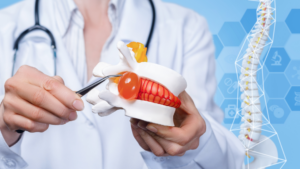
What’s the Difference Betwen a Herniated Disc and Bulging Disc?
The discs are primarily made up of water at birth, and over time, they dehydrate and degenerate. This causes the joints to become stiff. These changes in the spine can cause pain and abnormalities in the discs and their structure.
Chances are, the terms bulging disc and herniated disc are familiar. They are both common to patients who suffer from back pain, but are very different conditions.
What is a Bulging Disc?
Bulging discs occur when the disc becomes dehydrated and its circumference increases. Think of a hamburger that is too big for the bun. Only the outside, tough cartilage layer is affected.
Age-related conditions like lumbar stenosis and other degeneration issues can cause bulging discs. Because it is a degenerative condition, the symptoms can take a long time to fully appear, but can affect the buttocks, upper legs, and most commonly, the back.
There are many treatment options, depending on the severity of your pain and the number of bulging discs.
- Short-term treatments: Anti-inflammatory medications & steroid injections
- Long-term treatments: Exercise program or lumbar decompression
What is a Herniated Disc?
Herniated discs, also called ruptured or slipped discs, are typically much more painful than bulging discs. This is because herniated discs occur when there is a crack in the outer cartilage, exposing the inner, soft cartilage. The soft cartilage can seep through the cracked outer layer and has the ability to reach nerve roots, causing immense pain.
Herniated discs are most frequently caused by acute injuries or strain on the back, such as twisting, lifting heavy objects, or in some cases, obesity. The added weight and strain on the spine can cause ruptures. A sedentary lifestyle can cause the back to weaken and also cause discs to become herniated.
Herniated discs can be prevented by maintaining proper body weight, performing core-strengthening exercises, and keeping good posture while sitting and standing.
Treatments options come in a variety of options:
- Over-the-Counter medications: OTC pain relievers can alleviate the pain for mild to moderate pain.
- Cortisone injections: Corticosteroids may be used to suppress inflammation around the nerve area.
- Therapy: Physical therapy can help improve posture and teach exercises designed to minimize pain.
- Surgery: If other treatment options fail, and you experience numbness, loss of bladder control, or difficulty standing, surgery may be your best option.
Both herniated discs and bulging discs can be treated without surgery, in most cases. With evolving technology, it has become easier and easier for physicians to treat back pain with non-medicated techniques.
To learn more about herniated and bulging discs and how they can be treated, contact the team at Progressive Pain today.
Like the rest of your body, your bones need nutrients to thrive. A healthy diet is crucial to maintaining your overall health and the well-being of your bones.
An important way of maintaining proper bone health and preventing bone diseases like osteoporosis is by focusing on proper nutrition. Diets rich in calcium, vitamin D, iron, and other micronutrients greatly prevent osteoporosis.

Cooking a Healthy Diet for Osteoporosis
Eating a well-balanced diet can provide your body with the nutrients it needs. Here are a few ways to incorporate healthier food options into your daily diet.
Nutrition and Osteoporosis
-
Eating Fruits, Veggies, and Whole Grains
Eating foods that are low in calories and fat, but high in fiber and vitamins can help protect your bones against diseases. Whole grains, fruits, and veggies are high in magnesium, potassium, and vitamin C. It is recommended to eat four servings a day.
-
Limit Processed Foods
Foods that are processed contain harmful additives, like phosphorus. This can interfere with how much calcium is absorbed into your body. Foods high in sugar and salt are also harmful and have been known to offer little nutritious value. A diet high in sugar is highly caloric and little few vitamins. Too much salt can affect your blood pressure and increase calcium excretion.
-
Eat Healthy Fats
To function correctly, your body needs some fat in its diet. Monounsaturated fats – those found in nuts, olive oil, and seeds – is the best choice. Including omega-3 fatty acids that is found in cold water fish provides your body with eicosapentaenoic acid (EPA) and docosahexaenoic acid (DHA) which is important to your body’s overall health.
-
Include More Protein
A major component of your bone tissue is protein. Include plant proteins like beans and nuts for a good source of vitamins, minerals, and plant compounds that help preserve bone density. Protein like milk and yogurt are another good source of protein, and they also include calcium, which is important for your bone health.
-
Reduce Alcohol
Alcohol has been linked to the deterioration of bone and the body’s ability to absorb calcium. If you choose to drink, drink in moderation – meaning one drink a day in adults older than 65 and no more than two drinks a day for men 65 and younger. Because women already have a higher susceptibility to bone disease, drinking more than 2 alcoholic beverages a day can hasten bone loss.
There are clear benefits to having a diet rich in calcium and vitamin D. Other micronutrients that optimize bone health can be achieved by adopting a diet that is high in fruits and vegetables that increase the intake of magnesium, potassium, vitamin C, and vitamin K. Not only will it help strengthen your bones, but will help prevent diseases, damage, and fractures.
One of the most common causes of heel pain is plantar fasciitis. This inflammation affects a band of tissue that runs along the bottom of your foot, connecting the toes to the heel bone. Pain may decrease throughout the day but is typically more severe in the morning or after long periods of sitting.
Causes of Plantar Fasciitis
Our body weight rests on our feet – heel, toe, heel, toe. As the foot bears weight, it flattens and puts pressure on the plantar fascia. The plantar fascia pulls on the band of tissue that attaches the toes to the heel.
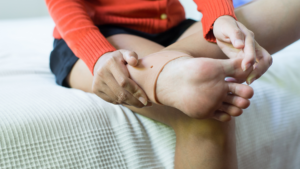
If the foot is aligned, the pull does not cause problems. However, if the foot rolls outward at the ankle or the arch is not supported, there is an abnormal pull on the band of tissues, causing pain.
Causes may include:
- Lack of arch support
- Weak ankles that roll
- Increase in activities: running, tennis, soccer
- Obesity
- Poor flexibility
- Standing for long periods of time
- Wearing shoes with little support and little cushioning
Signs and Symptoms
When you have plantar fasciitis, it can feel like you have bruising or an ache in the bottom of your foot. The pain may be worse in the morning but will diminish as you walk and move around. It is common for pain to return if you spend too much time on your feet. If the nerve becomes swollen, pain can radiate to the ankle.
Without treatment or proper care, the plantar fascia may eventually tear. This torn area becomes filled with calcium, creating a heel spur. The foot can feel warm, tender, and swollen.
Plantar Fasciitis Treatments
Treatment options vary depending on the patient and the severity of their pain. Often, treatments are focused on reducing inflammation and pain. This can be through applying ice to the affected area. Physical therapy techniques, such as stretching and increasing range of motion, are helpful in reducing pain and preventing further injury.
Other treatment options include:
- Rest – Taking a break from weight-bearing activities can reduce your pain. Elevating your foot when sitting reduces swelling.
- Orthotic shoe inserts – Use shoe inserts to reduce excess motion and to decrease strain on the plantar fascia.
- Splinting at night – wearing a splint at night keeps the plantar fascia stretched while you sleep to prevent pain in the morning.
Ignoring foot pain can lead to ankle, hip, or back pain, so it’s important to see a physician if you suffer from plantar fasciitis or other foot pain.
Contact the team at Progressive Pain to learn more about treatment offerings for plantar fasciitis.
Neck pain is a result of weakened muscles due to poor posture. The CDC reports that nearly 20% of people have experienced neck pain in the last three months, which is no surprise since we constantly gaze into our computers and look down at smartphones.

Ways to Reduce Neck Pain
Everyday life can be hard on the muscles in your neck. Muscles get tired from misuse and that can cause the joints to become stiff. The joint will often catch on something, pulling a muscle or pinching a nerve causing instant pain and muscle spasms.
5 Ways to Relieve Neck Pain
Stretch Often
Employ proper stretching techniques to help relieve strain on your muscles. Here are some stretches you can do at home or at work when your neck feels stiff:
- Roll your shoulders back 10 times
- Bring your ear to your shoulder 10 times on both sides
- Push your shoulder blades together 10 times.
Stay Hydrated
Drinking water throughout the day is important to your overall health, but muscles and discs in the neck and back require a lot of water. Spinal discs are roughly 80% water at birth, and the ratio decreases throughout your life. Proper hydration may help reduce the risk of degeneration and help reduce neck pain.
Make Ergonomic Adjustments
Adjust the position of your computer so you can see it without having to look down. Instead of looking down at your phone or tablet, hold your device at a higher level or prop it up at a 45-degree angle to help reduce strain on the muscles in your neck. Take frequent breaks from looking at screens.
Take Magnesium
Magnesium aids in the contraction and relaxation of muscles, so increasing your magnesium intake may help avoid pain. Fruits, vegetables, and whole grains are good sources of magnesium and can also be absorbed through your skin by taking an Epsom salt bath or applying magnesium oil after a warm shower.
Keep Moving
Reversing poor posture is tricky, so frequently moving and taking breaks from sitting helps reduce pain and muscle strains. If you sit at a desk for work, adjust positions in your chair and be careful not to sit for long periods without getting up to move and walk.
You can do small things at home, at work, or on the go that help decrease your risk of chronic neck pain. If the pain worsens, it is important to speak to your doctor at Progressive Pain so they can help determine the underlying cause of the pain.
Knee pain is a common condition that affects people of all ages. It can be acute or chronic pain, depending on the cause.
Knee pain may be the result of a medical condition or an injury. Minor pain typically responds well to at-home methods of treatments; however, in more serious cases, your physician may recommend interventional procedures.
Causes of Knee Pain
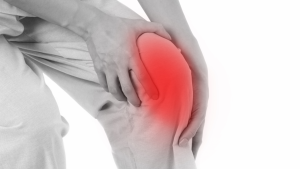
What You Need to Know About Knee Pain?
The causes of knee pain can be divided into three major categories: acute, chronic/overuse, and medical.
Acute knee pain encompasses most injuries such as ligament, meniscal, and broken bones. A direct hit to the bones in the knee can cause the bones to break. Knee fractures are painful and can interfere with the way the knee functions, especially when the kneecap is fractured.
The meniscus, cartilage that acts as the shock absorbers between the bones in the knee, can become injured if twisted while bearing weight.
ACL tears are a common injury to athletes. The ACL is one four ligaments that connects the shinbone to the thigh bone. Injury is often caused by a quick stop and change of direction like in basketball or soccer.
Chronic knee pain, or overuse causes include things like osteoarthritis, tendonitis, and chronic inflammation. Age often contributes to chronic knee pain, as general wear-and-tear on the joints can damage bone and cartilage.
Runners and cyclists often suffer from patellar tendinitis, an inflammation of the tendons which connect the kneecap to the shinbone. It is caused by repetitive motion and by causing stress under the kneecap.
Medical conditions which cause knee pain include gout, autoimmune diseases, and even other mechanical issues. Autoimmune diseases cause inflammation throughout the body, affecting any joint. Gout is a type of arthritis that typically affects the foot, however it can affect other body parts. Flare up can cause severe pain.
When other body parts, such as the foot or hip, are damaged, patients often compensate by walking differently or shifting weight. An altered gait can put more stress on the knee joint.
Treatment Options for Knee Pain
Treatments will vary depending on how severe your pain is and the root cause of your pain.
Medications
In some cases, medication will be prescribed to treat the underlying cause of your pain. These medications are often a form of anti-inflammatory medications to help reduce joint swelling and alleviate pain. If you use over-the-counter medications to regularly treat chronic pain, you should see a physician.
Injections
Joint injections can be used to treat knee pain in certain situations. Corticosteroids reduce arthritis flare-ups and can provide relief for a few months. Platelet-Rich Plasma (PRP) is a concentration of growth factors that helps reduce inflammation and promote healing using the body’s natural abilities.
Physical Therapy
Strengthening muscles that surround the knee can help stabilize the joints, reducing pain. Depending on the condition cause you pain, your physician may recommend physical therapy. Exercises can correct movements that affect your knees and teach good techniques for daily life as well as activities and sports.
Learning to improve flexibility and balance are also important to improving chronic knee pain.
Living with knee pain doesn’t have to prevent you from doing what you love. If you suffer from chronic knee pain, contact the team at Progressive Pain today.

